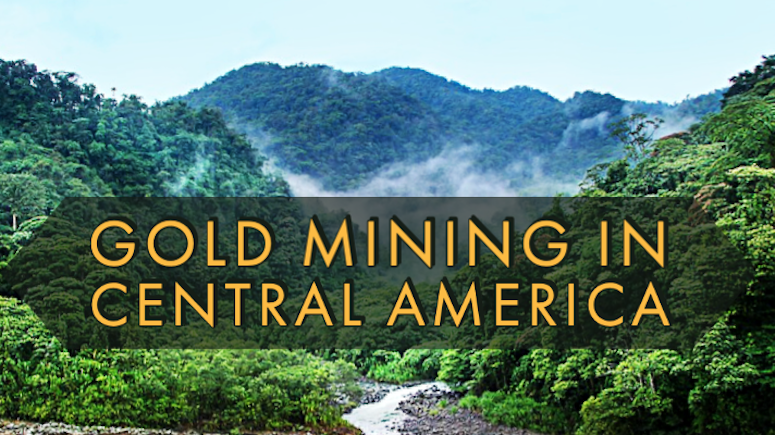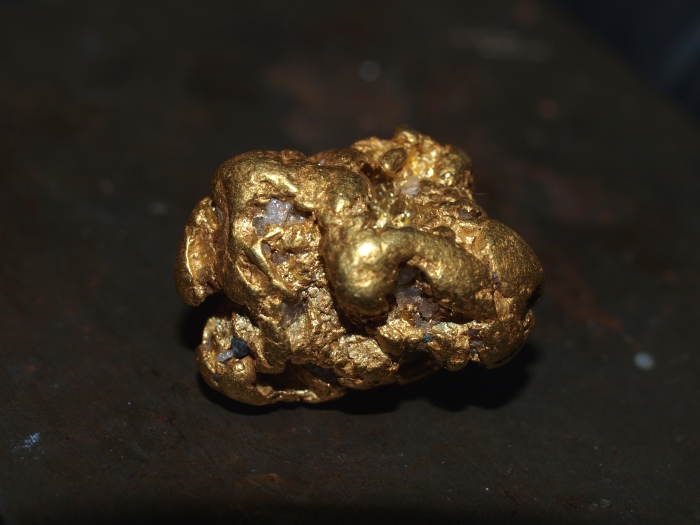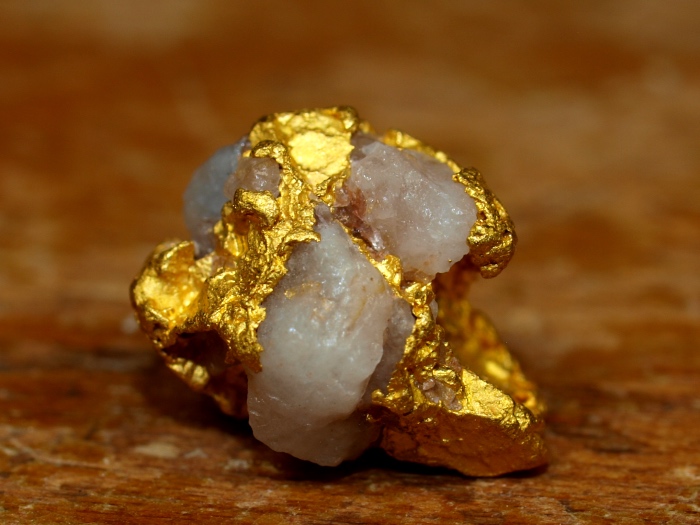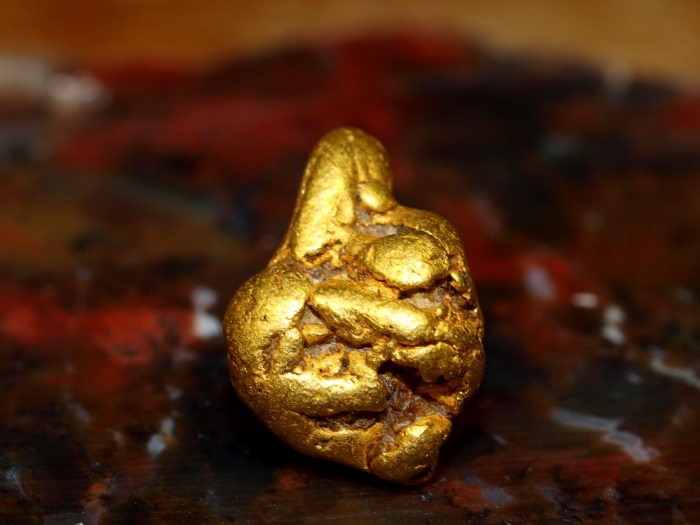
The mountains and dense forests of Central America hide vast reserves of gold that are yet to be fully extracted. Gold was known to the people living there even before the Europeans arrived. But, in modern times gold mining has not been easy because of strong opposition.
Let’s learn about the past and current gold mining activities in some Central American countries.
Gold Mining in Guatemala
Recent conflicts might have thrown a wrench in the cog of the mining activity in Guatemala. But, historically gold mining activities were carried out extensively as early as the Mayan civilization. After the arrival of the Spaniards, between the 17th and 19th Centuries, as many as 1300 mines were opened. The mines produced gold, silver, iron, copper, etc.
Starting around 2005, the Marlin Mine became the largest gold mine in the country. The mine soon started producing 200,000 ounces of the yellow metal per year. The operations of the mine ceased in 2017 due to opposition from local communities.
Experts agree that more than half of all mineral resources are located in the mountain regions of Guatemala. Much of the gold in Guatemala is still untapped. Experts believe gold and other minerals are mainly located in San Marcos, Huehuetenango, Totonicapan, Solola, Baja Verapaz, Alta, and Quiche.
Gold Mining in Honduras
Honduras has favorable geological conditions like other Central American countries. It’s blessed with several active and dormant volcanoes, which explains its dense forests and fertile soil suitable for agricultural activities.
But, mining and prospecting haven’t taken off in a big way due to strong local opposition and its bleak economic conditions. In the past, mining activity commenced in the country after the arrival of the Spaniards. They focused around the town of Gracias, where several mines opened.
Gold mining activity at the local level is going on for decades. Due to various reasons, not many large deposits of gold have been unearthed. But, mining of small placer gold from the rivers by the locals and other prospectors is a common sight.
People have found gold in the Rio Coco River. Paluca River and Rio Cuaymel River have seen gold mining activity in the past. Medium size gold mining operations are carried out at several locations in Honduras. The Las Vueltas, San Andres, San Martin, and El Mochito Mines have all produced a considerable amount of gold.
Read: How Suction Dredges find Placer Gold

Gold Mining in Nicaragua
Nicaragua isn’t just the largest country in Central America; it’s also the highest gold producer with an output of 10 million ounces of the precious metal. The country’s geology is highly suitable for precious metal and mineral extraction. Scientists have found Palaeozoic metamorphic rocks (in the north), Mesozoic volcanic rocks (in the east), and Quaternary volcanic and felsic rocks (in the west).
At present, there are three large mining operations and several small and placer mining activities happening in Nicaragua. The La Libertad Mine has so far produced 170,000 ounces of gold, the El Limon extracted 2.7million ounces, and the largest producer Bonanza mined 3.1million ounces of gold. Two mining districts – Rosita and Siuna – are known for large scale mining activity in the past and present.
Gold Mining in Costa Rica
When explorers first visited Costa Rica the sight of gold-decked locals promised rich deposits of gold in the region. Subsequent visits to the country for colonization were met with intense resistance.
After colonizing the Latin American countries, the Europeans took home tons of gold and other valuables for centuries. Even though it was known that Costa Rica contained plenty of gold, mining activity did not take off for nearly 400 years.
Large scale commercial mining began in the country only in the 1930s. Mining activities at Corcovado produced high-grade gold and plenty of it was extracted from gold veins.
The exploitation of Corcovado affected both the fauna and flora in the region. Large scale commercial mining was first banned in 1975 and the area was declared a protected zone. Despite the ban, illegal gold mining and prospecting activities were rampant, which forced the government to completely outlaw any type of gold and mineral extraction in the region.
Although there is a country-wide ban on large scale gold mining, prospecting is allowed and happens in several places. Before you start searching for gold, find out if prospecting is allowed in the area.
Gold Mining in Belize
Experts claim Belize has plenty of unexplored gold deposits in its Maya Mountain regions. For now, placer deposits seem to be the only option for gold prospectors. In Belize, gold extraction from alluvial deposits began only 60 years ago.
Prospectors took the precious metal from the waters that drained from the Maya Mountains. Several factors have hampered the mining activity in the country. The tough terrain, thick forests, lack of roads, unavailability of modern mining equipment, and lack of knowledge of gold deposits have all played a part in discouraging gold prospecting.
Some level of prospecting is taking place in the mountainous regions and water sources around the Maya Mountains. Prospectors ready to overcome the obstacles are sure to benefit. In the 1990s, Alberto and George Boiton started gold mining in the area. The two brothers have taken gold worth 7.5 million Belize dollars so far. Armed with a license and environmental clearance, anyone can mine gold in the country.

Gold Mining in El Salvador
The smallest country in mainland Central America, El Salvador is believed to contain huge gold deposits, estimated to be around 400 tons. Mining of gold, silver, and other minerals was carried out for years. Several large mining corporations, mainly from the United States, were operating in the country.
Due to strong opposition from the locals and environmental groups that blamed mining for depleting groundwater levels, water pollution, and deforestation, the government decided a blanket ban on all mining operations in 2017.
Gold Mining in Panama
The original inhabitants of Panama were producing gold centuries before the Spaniards set foot in the Americas. But the production multiplied many folds after their arrival. A sizable amount of gold is found in several places: Canazas Mine, El Remance Mine, and Los Hatillos Mine.
History of gold mining activities shows that Margajas and Cocuyo were popular mining sites on the northern coast of the country. Cupe River and Paca Rivers in the Darien province are rich in placer gold. Several parts of Panama contain placer gold but the tough terrain impedes prospecting activities.
The Unpopularity of Mining in Central America
Hurdles are common in the mining sector throughout the world. But, in Central America, the challenges are huge due to problems at multiple levels.
Mining activity never took off in a big way due to constant opposition from environmental groups and local communities. Some projects were halted, while many were never allowed to commence the excavation activity. Many federal governments of Central America did not take any step to convince or persuade the local communities.
In Guatemala, both people and the government take a negative view of mining, whereas El Salvador and Costa Rica have already banned open-pit mines. Corruption has run rampant in many parts of the industry and it is not looked at favorably by much of the local populations.
It’s not all bad news from Central America. Ongoing gold production and the opening of Cobre Panama Copper Mines a couple of years back in Nicaragua bode well for mining activity in Central America. It’s worth saying that mining activity in Nicaragua is continuing well despite the political crisis and economic problems in the country.
The unpopularity and unfavorable environment for mining in Central America can be attributed to three main reasons.
A rising gold price is likely to increase the interest in Central America’s vast mineral reserves. Even with all the challenges associated with mining in this region, the allure of wealth that can be generated cannot be ignored.

